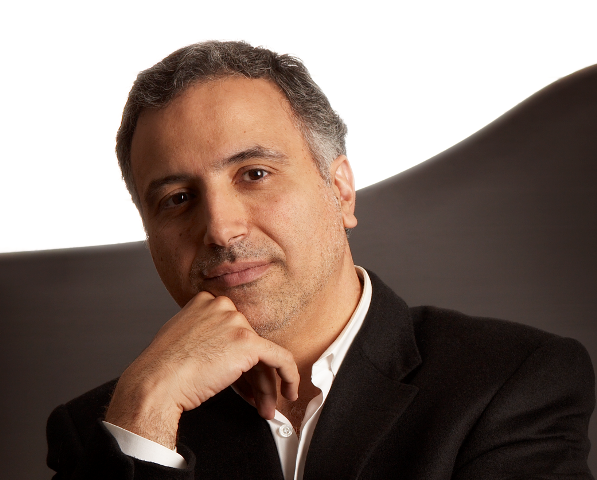By Jeff Maisey
The duels and competition of ideas among some of America’s early political leaders are famously documented in historical written accounts, but it is perhaps even more fascinating to think of composers from the Baroque period nearly impaling the other.
Such is the background for Norfolk Chamber Consort’s 2017-18 season opener, “George Frederick Handel & His Frenemies,” featuring select works of Johann Mattheson, Nicola Porpora, and the brilliant Handel.
The September 18 performance at Christ & St. Luke’s Church in Norfolk will commence at 7:15 with a must-hear pre-concert discussion illuminating the competitive nature of these composers, with music beginning at 7:30 PM sharp.
To learn more about this performance I asked Old Dominion University Professor of Music and Norfolk Chamber Consort Director Andrey Kasparov to share his expert insights.
I am intrigued about the theme “Handel and his competitors.” Why were Handel, Mattheson and Porpora such fierce competitors? Was it simply professional as composers or was it personal, and why?
It was both professional and personal. To further understand this issue it is necessary to be cognizant of the fact that Handel was one of the first successful commercial composers in history and that he no longer depended on full-time employment by church or court. He was able to make a living off of commissions and performances, but whenever somebody accomplishes this, there is always going to be a competing party scrambling for a piece of that pie. To be successful in London at the time a composer had to be able to write opera arias in the luscious Italian style, the craft Handel, a German by birth, quickly mastered much to the displeasure of Nicola Porpora, an Italian, who came to London for this very purpose. They subsequently locked horns in an epic way, competing for the dominance in this field.
It was different with Johann Mattheson, a life-long friend of Handel’s. Close friendship, however, did not stop the two men from crossing swords with one another in a lethally dangerous fight, during which Mattheson struck Handel in the chest. Had the metal button not been there to deflect that strike, we would not have Messiah and numerous other masterworks. (Don’t those sword fights make any contemporary combat sport look like a child’s play?)
Musically speaking, in terms of composition and melody, why was Handel superior to the other two?
This is exactly the question we, the mortals, will most likely never be able to answer. We can guess, speculate, work towards the answer, but it will always be a sort of a metaphysical experience: explaining the unexplainable. But imagine for a second that one day we are able to crack that code. Then there would probably be about a thousand Handels in Norfolk alone, walking the city streets, competing with each other and begging all local organizations to get their work performed. How about this for an episode from a science fiction movie!
Stylistically, what are the primary differences and similarities of the works of these three composers?
All three composers worked within a well-established late Baroque idiom. There were, however, significant differences that hinged on the nature of the three composers’ work, objectives and life circumstances. Mattheson, for instance, was one of the preeminent theorists and critics of the day, whose good graces were sought by the leading musicians of that period. Porpora, on the other hand, was an opera composer whose task was to produce crowd-pleasing arias for famous singers, including Farinelli, a castrato whose working relationship with both Porpora and Handel was part of a well-known 1994 film with the eponymous title. Handel, by comparison, delved into a wide variety of musical genres and forms, forging a style that combined elements of both Porpora’s popular appeal and Mattheson’s intellectualism.
How were the works of Mattheson and Porpora regarded in their time?
Both musicians were held in a very high esteem during their lifetimes and were successful financially, although Porpora fell out of fashion later in life and died very poor.
How are their works regarded today by modern scholars, educators and arrangers such as yourself?
We have been living in an amazing time of rediscovering our musical past. This process started during the first quarter of the 20th century and subsequently brought some major Baroque names, such as Vivaldi for instance, back into the repertoire. With this trend still continuing today, more and more Baroque names, who for this or that reason fell into obscurity, are coming back to the fore. Porpora’s arias are now being recorded by superstars such as the Italian mezzo soprano Cecilia Bartoli and the French countertenor Philippe Jaroussky, while Mattheson’s instrumental works are being performed by groups ranging from middle school guitar ensembles to the biggest authorities in the Baroque practice. It is a great time to enrich our lives by re-evaluating the music of Baroque, experiencing it fully through compositions by a wide slew of its representatives, not only the most famous ones.
What was it about these four compositions that made you select them for performance?
Compositions on the program, and there will be more than a sample of the four listed in the Norfolk Chamber Consort’s subscription flyer, share common genres and forms, as for instance opera arias by Handel and Porpora or instrumental suites by Mattheson and Handel. Our audience, therefore, will be able to appreciate and judge for themselves how these masters used at times identical compositional techniques to achieve broadly differing effects.
WANT TO GO?
Norfolk Chamber Consort
“George Frederick Handel & His Frenemies,” September 18
Christ & St Luke’s Church





